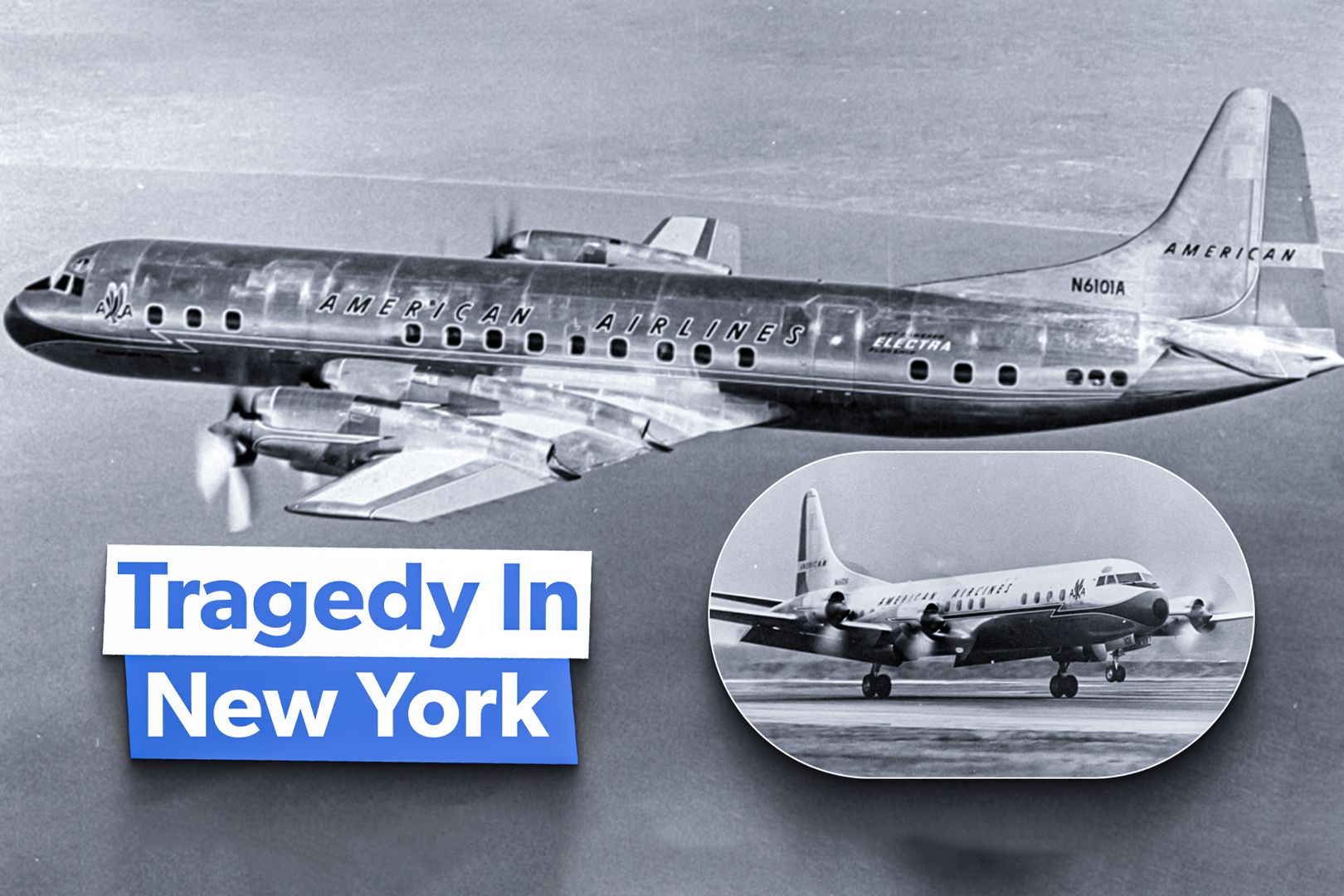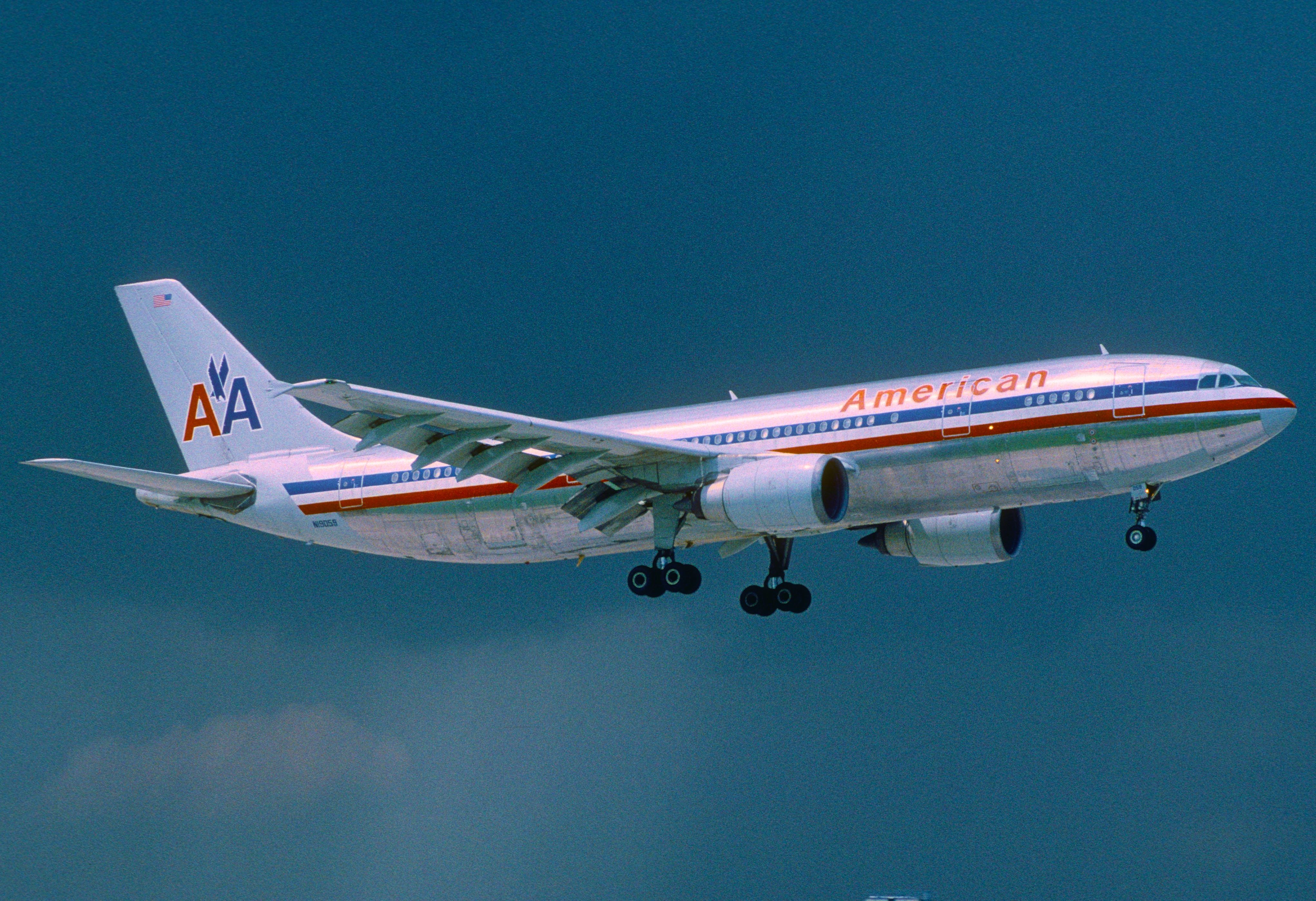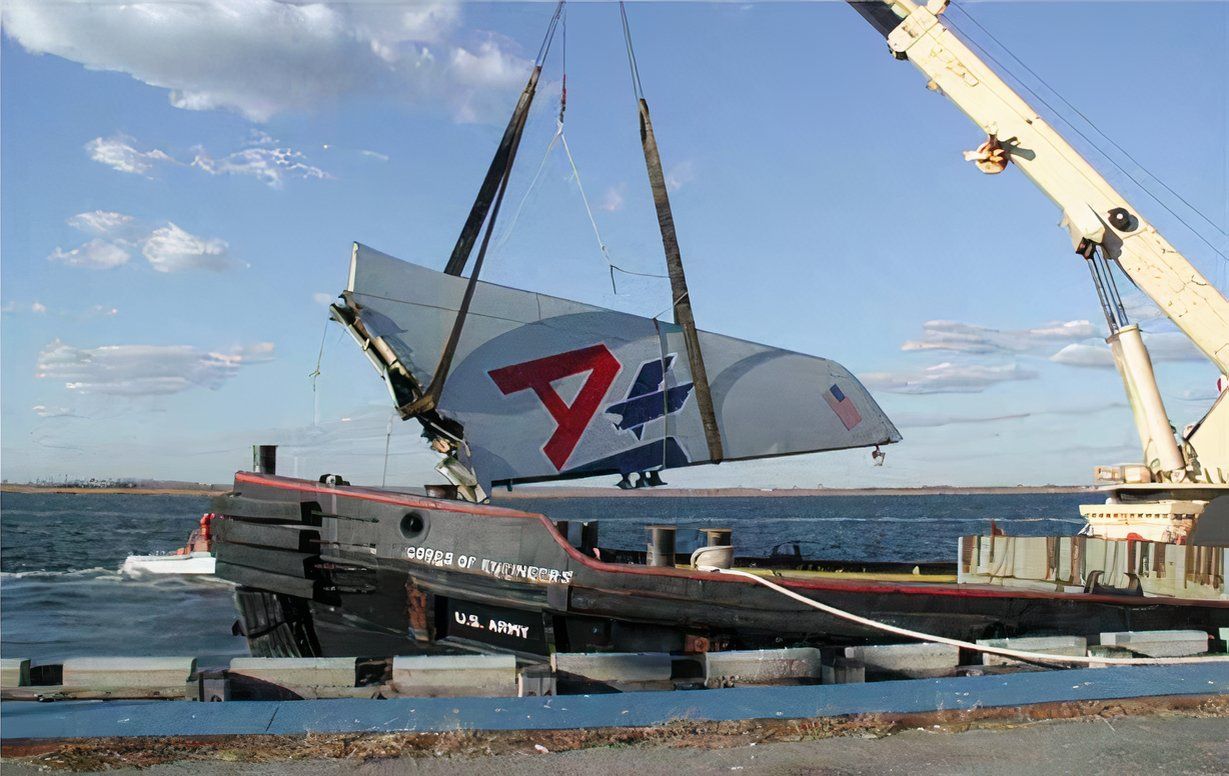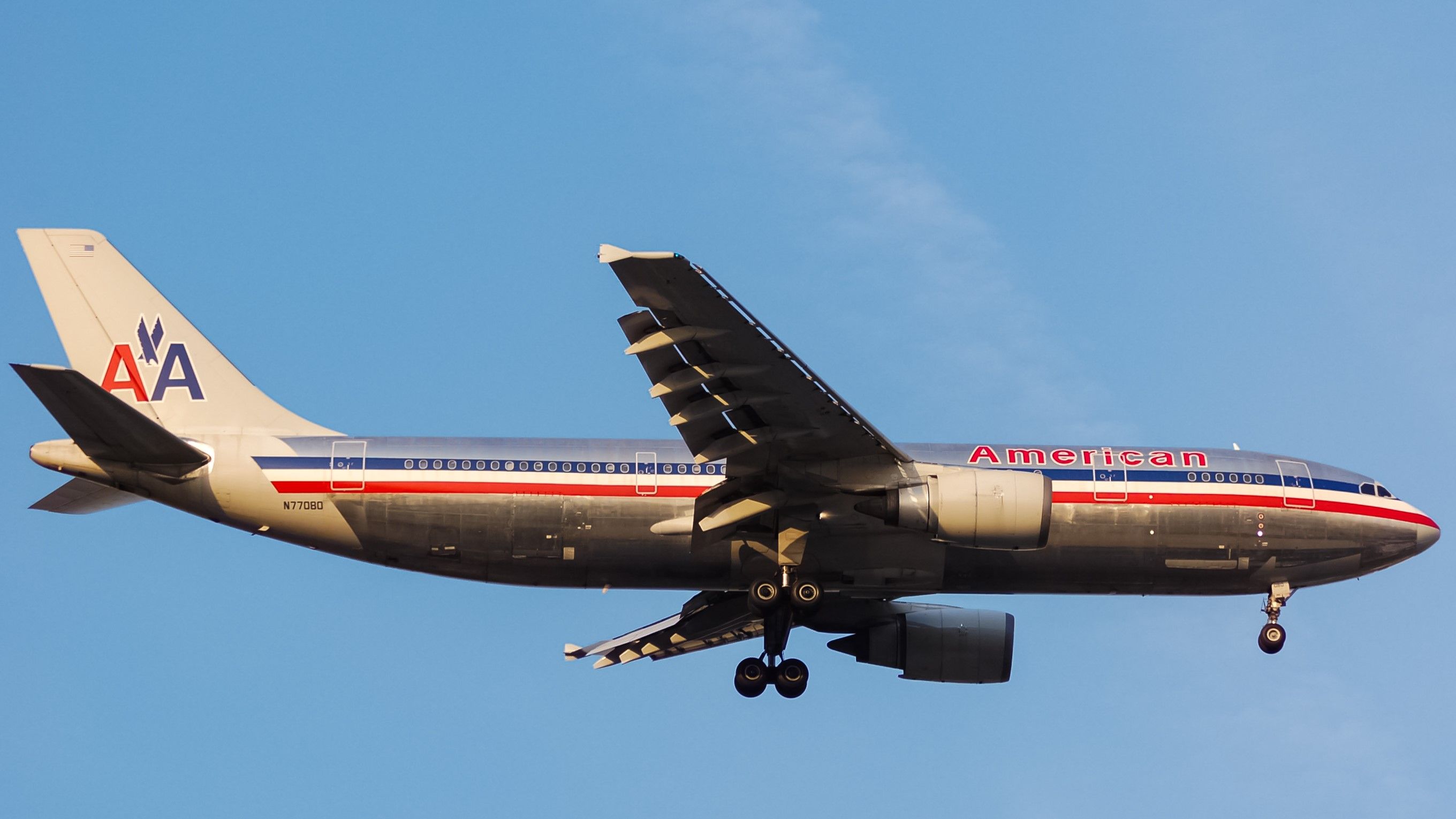Summary
- American Airlines Flight 587 crashed in Queens and is the second-deadliest crash in US aviation history.
- The in-flight separation of the vertical stabilizer led to a fatal spiral and the crash of the aircraft.
- The NTSB found excessive rudder use by the first officer and sensitive rudder system to be key factors.
American Airlines Flight 587 was a scheduled commercial flight from New York John F Kennedy International Airport (JFK) to Las Americas International Airport (SDQ) in the Dominican Republic. On November 12, 2001, around 09:16 Eastern time, the aircraft dropped from the sky and crashed into a residential area of Belle Harbor, New York, killing everyone onboard and a few people on the ground.
Crashing shortly after takeoff
Flight 587 was operated by an Airbus A300-600, registration N14053. On the day of the accident, it carried 260 people, including 251 passengers and nine crew members. On an eventful morning, American Airlines Flight 587 taxied to the runway behind a Japan Airlines Boeing 747-400 (JAL Flight 47). Minutes later, JAL 47 was cleared for takeoff.
The air traffic controller cautioned American 587 of possible wake turbulence from the preceding jumbo. Just over two minutes later, American 587 took off from the same runway (31L) and began its initial climb. Shortly after leaving the ground, the aircraft made a left turn to climb to 5,000 ft (1,500 m). The controller affirmed the altitude and cleared the pilots to climb to 13,000 ft (4,000 m) and maintain.
During its left turn, the aircraft suffered a minor jolt, supposedly due to wake turbulence from the preceding aircraft. The pilot quickly moved the aircraft rudder from left to right multiple times to correct the turbulence. The rapid and successive yaw moments (combined with pitching moments due to climb and roll moments due to the bank angle) caused high forces on the vertical stabilizer.

Related
American Airlines Flight 320: The Story Of The Lockheed L-188 Electra’s First Hull Loss
Sixty-five people died after American Airlines Flight 320 crashed into New York’s East River.
The composite lugs attaching the vertical stabilizer to the aircraft failed, forcing the stabilizer to separate from the aircraft and fall into Jamaica Bay. The Airbus A300 suddenly pitched downward due to the loss of vertical stabilizer. Moments later, the aircraft rolled to one side and entered into a spiral. The pilots struggled to control the crippled jet.
The aircraft and wreckage
The accident aircraft, registration N14053, was delivered new to American Airlines on July 12, 1988. At the time of the crash, it had accumulated 37,550 flight hours across 14,934 cycles. According to the National Transportation Safety Board (NTSB), the aircraft’s weight and balance on the fateful day were calculated according to the American Airlines takeoff performance system and the Airbus A300 Flight Crew Operating Manual (FCOM) procedures.
The Airbus widebody was completely destroyed in the crash due to impact forces and the resulting fire. Onboard, power to the controls and most systems had been cut. The stall warning sounded in the cockpit while pilots struggled with the controls. Just about three minutes after leaving JFK, the aircraft slammed to the ground, killing the 260 people onboard and five others on the ground.
As the aircraft hit the ground, it destroyed four homes and caused minor and substantial damage to six others. The left engine damaged a gas station, while the right engine severely damaged a home and a parked boat. The main wreckage was located about four miles southwest of the JFK runway at the intersection of Newport Avenue and Beach 131st Street.
The vertical stabilizer and the rudder, which had separated from the aircraft mid-flight, were found at Jamaica Bay, about 0.75 miles (1.20 km) from the main wreckage area. The two General Electric CF6-80C2A5 engines also separated during the flight. The right engine was found at 414 Beach 128th Street, about 800 ft (243 m) from the main wreckage, while the left engine was found at 441 Beach 129th Street, about 800 ft north-northeast of the main wreckage area.
The crew operating the flight
The captain on the day of the crash was 42-year-old Captain Edward States, who was the pilot monitoring and undertaking radio communications. Flying the aircraft was 34-year-old first officer Sten Molin. Both pilots were experienced and had been at American Airlines for many years.
According to the airline’s records, Captain States, hired in July 1985, had accumulated 8,050 hours total flying time, including 3,448 hours as pilot-in-command and 1,723 hours as an Airbus A300 captain. The first officer, hired in March 1991, had accumulated 4,403 hours total flying time, including 1,835 hours as an A300 first officer.
The cause of the crash
The National Transportation Safety Board led a comprehensive investigation into the crash. The agency showed that the force of air moving across the rudder due to the excessive use of the rudder stressed the aircraft’s vertical stabilizer. In its final report, the NTSB noted,
“The National Transportation Safety Board determines that the probable cause of this accident was the in-flight separation of the vertical stabilizer as a result of the loads beyond ultimate design that were created by the first officer’s unnecessary and excessive rudder pedal inputs.”
Photo: NYC Russ | Shutterstock
The Airbus A300’s sensitive rudder system contributed to the failure of the composite lugs. Moreover, the Advanced Aircraft Maneuvering Training Program employed by American Airlines also contributed to how pilots handled a simple wake turbulence situation. Following the investigation, the NTSB issued recommendations to the FAA and the Direction Général de l’Aviation Civile.
Do you remember the crash of American Airlines Flight 587? Please share your thoughts and experiences in the comments!




